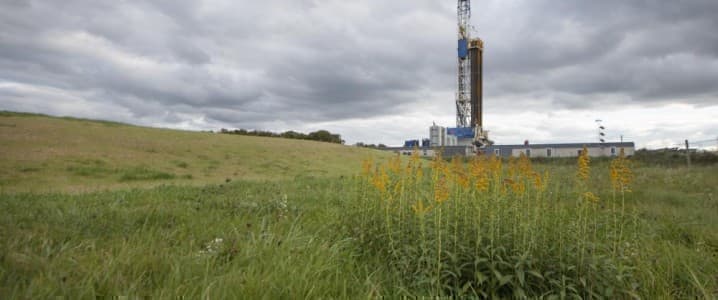[ad_1]
The U.S. has benefitted significantly from fracking over the last decade, with hydraulic fracturing helping producers to access some of the most hard-to-reach fossil fuel resources. But the industry has faced continual criticism from environmentalists who fear the impact of fracking operations on the environment. Instead of moving away from fracking, like many European countries, the U.S. appears to be cleaning up its act with more environmentally friendly practices and by using fracking technology in new and innovative ways. The U.S. has been using fracking (hydraulic fracturing) techniques since 1947, drilling 1.2 million wells in that time. Fracking, the method of recovering oil and gas from shale rock, involves drilling into the earth and aiming a high-pressure mix of water, sand, and chemicals at a rock layer to release the gas contained inside. These operations have helped producers access seven billion barrels of oil and 600 trillion cubic feet of natural gas.
Using fracking techniques has helped the U.S. tap into vast oil and gas reserves that were inaccessible to traditional drillers. During the fracking boom of the 2010s, the U.S. overtook Russia and Saudi Arabia as the biggest crude oil and natural gas producer worldwide. Its domestic crude production rose from 5.4 million bpd in 2010 to 13 million bpd by 2019. Production has waned in recent years as we saw the beginnings of a slowdown in 2019 followed by pandemic restrictions and a demand decrease.
While the U.S. relies heavily on fracking for its oil and gas output, environmentalists have continually fought to halt fracking operations due to environmental concerns. The main concerns include risks to air quality, water contamination in fracking areas, and concerns over seismic events caused by fracking. Related: U.S. Gulf Of Mexico Can Help Fill Global Oil Supply Gap
According to one analysis by the Energy Policy journal planned drilling projects in the U.S. will release 140 billion tonnes of greenhouse gasses into the atmosphere if they go ahead. The main area of concern is the Permian basin, a 250 miles wide geological formation spanning west Texas and New Mexico. One area, the Delaware basin, is expected to emit 27.8 billion metric tonnes of carbon based on current drilling plans, while the Midland basin could release up to 16.6 billion tonnes of emissions.
Many countries across Europe have already banned fracking due to uncertainties around seismic movements and other environmental concerns. Germany, France, and Spain have banned fracking entirely. Meanwhile, the U.K. introduced a ban on fracking in 2019 but just made a U-turn on this decision under new Prime Minister Liz Truss, who is aiming to re-establish the country’s energy security.
Following a year of mounting pressure after the COP26 climate summit and subsequent advances in U.S. climate policy, producers are now looking to clean up their act. The country’s Environmental Protection Agency (EPA) has mandated emissions standards for non-road diesel engines, meaning that fracking operations will switch to Tier II and Tier IV engines, which will reduce carbon emissions. In addition, many fracking operators are introducing new ESG measures, such as water recycling, emissions reduction at the well site, and the use of in-basin sand to eliminate drying and long-haul transport.
And several startups and coming up with their own innovative ways to make utilize fracking technology in environmentally friendly ways. One such startup, Microseismic, believes it can thrive in the climate change era. The company provided unique seismic monitoring equipment in the early 2000s, using a stethoscope-like technology as opposed to seismic vibrators, which act like ultrasound equipment. Although not the original purpose of the company, Microseismic began supporting shale operations as the gas boom took hold. CEO Peter Duncan explained, “They told us to do frac monitoring, and it became more valuable to clients as they started drilling long horizontal wells that could no longer be sensed or monitored with a single down hole.” Microseismic was building the equivalent of a big dish microphone up on the surface, which was highly valuable for producers.
Following the pandemic, which led Microseismic to lay people off due to its reliance on the weakening shale business, the company is bouncing back with innovative ideas for reducing emissions in shale operations and elsewhere. Microseismic has experience in carbon capture and storage (CCS) technology, which is becoming a must in oil and gas operations. Duncan stated, “Our science is extremely important in making CO2 sequestration work, and we are heavily pursuing it.” The startup has already applied for a DoE grant for commercial use of its equipment on fracking and sinkhole detection, as well as to support CCS operations, which is currently under consideration.
Duncan believes its passive seismic monitoring technic will help identify risks, “You can hear small microseismic events growing in magnitude, and then know it might be leading to a seismic event at the surface, and you can take action to stop that,” he said. “You can detect whether a crack is forming in the seal or rock that will allow the CO2 to leak outside the reservoir, and as a plume of CO2 grows, it will create microseismic events,” he added.
Fracking has ultimately helped the U.S. to become an oil and gas giant over the last 70 years. And although environmental concerns have hindered fracking operations, new technological developments and best practices are transforming the extraction method in the U.S.
By Felicity Bradstock for Oilprice.com
More Top Reads From Oilprice.com:
[ad_2]
Source link








